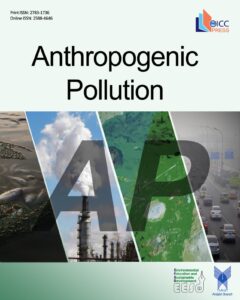Investigating the Efficiency of Lightweight Expanded Clay Aggregate (LECA) in Wastewater Treatment of Dairy Industry
Authors
Abstract
Lightweight expanded clay aggregate due to its physical and chemical properties; it can increase the process of adsorption and ion exchange. In this study, the efficiency 2 types of Lightweight Expanded Clay Aggregate in reducing the amount of COD, BOD, TSS, nitrate and phosphate in dairy industry wastewater were investigated and the impact of different factors such as adsorbent dosage, mixing speed and mixing time were studied. The results showed that the efficiency of COD reduction of wastewater after touch with the granular type after 20 h is 65.9%. TSS and BOD have also been greatly reduced. Also the use of powder type, the highest removal efficiency was 31.81%, mixing speed 100 rpm, mixing time 20h, and adsorbent dosage 10 gr/l in addition; increasing the rate of mixing speed increases the amount of nitrate absorption. The most effective nitrate removal is 63.87% which was at mixed speed 200 rpm and absorbent dose 4 g/l. Results show that, the mixing speed has little effect on the absorption of phosphate. So, after 30 minutes, even with increasing mixing speed for doses 2 & 4 g/l, the reduction efficiency also decreases the change in absorbent dose from 1 g/l to 4 g/l was virtually unaffected. Increased mixing speed is due to better distribution of nitrate and phosphate molecules in the solution and their contact with adsorbent increased the absorption rate. According to the results, the LECA granular has more ability to remove the COD.


